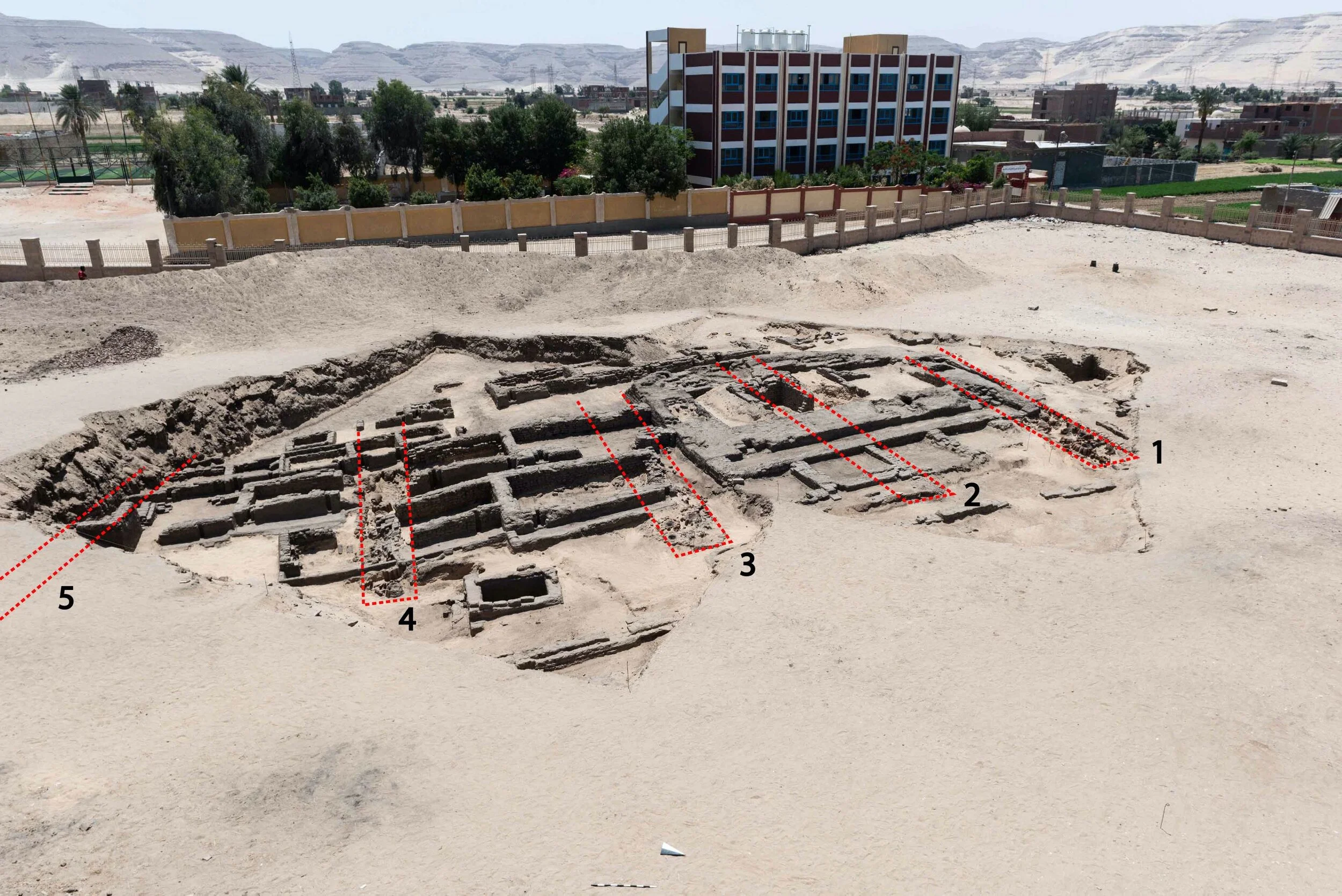Field Diary 2021.1 / Abydos Archaeology
Three years ago, excavations began at the far northern tip of the ancient site of Abydos, in a suburb out on the edge of a vast city of the dead that stretches for miles across the sacred desert landscape of Egypt’s first kings. Tombs and other structures here, including very ancient kilns, were known to date back to the late predynastic and early Old Kingdom (c. 3100—2700 BCE). Out on the margins of ancient activity, this part of the site was only half understood from previous excavations more than a hundred years earlier. Those early excavations left us the edges of a jigsaw puzzle with huge gaps missing from the picture. What was going on in this part of Abydos at the dawn of Egyptian history? And how did it relate to the sacred landscape of Egypt’s first kings a few hundred meters to the south?
Follow the archaeologists on their path to discovering the world’s first industrial-scale brewery underneath this ancient suburb of Abydos.
In 1912 British archaeologist T. Eric Peet, working for the Egypt Exploration Society, began excavating in the far north of Abydos at an area of the site he called “Cemetery D.” Underneath the earliest tombs in the cemetery Peet found a series of earlier structures, which he called “grain kilns.” He knew they dated to the late predynastic, but their full extent and function were not clear. He noted eight installations laid out in neat rows, which he thought might be ovens for drying grain (Peet, T. E. The Cemeteries of Abydos, Part II—1911-1912, EEF 1914).
“Cemetery D” sat untouched by archaeologists for more than a century. Meanwhile, evidence from other predynastic sites at Hierakonpolis, Tell el-Farkha, and elsewhere had shown us that these kiln features were actually used for beer production. So, what Peet had discovered was an ancient brewery. Unfortunately, its exact location in North Abydos had since been lost.
In 2018 project directors Matthew Adams from the Institute of Fine Arts, NYU and Deborah Vischak of Princeton University returned to the site to investigate the details of late predynastic and early Old Kingdom activity here. By the end of the 2018 season’s excavations the scale of the Abydos breweries was becoming clearer. And it was unlike anything else known from early Egypt.
Archaeologists Kay Barnett, Matthew Adams, and Deborah Vischak examine the newly rediscovered brewery features in 2018, which led to a radical reinterpretation of Peet’s earlier thinking about the site. The question was, would it also lead to a radical reinterpretation of more current thinking about beer production in ancient Egypt?
The North Abydos team, including archaeologists Mohammed Abu el-Yazid, Ayman Damarany, Christine McAllister, Jo Young, Joel Gamache, Kay Barnett, Deborah Vischak, and Matthew Adams returned to the brewery again in 2020, with the aim of documenting the true scale of the brewery, defining its full extent, possibly uncovering portions never before excavated, and collecting samples for dating and scientific analysis of the organic remains. Who, exactly, was making the Abydos beer, what was the recipe, and why on such a vast scale?
One batch of beer with the total facility in use at one time would have produced more than 22,000 liters. Though not the oldest brewery from early Egypt, the rediscovered brewery at North Abydos was Egypt’s first royal brewery dating to the so-called Naqada III period, which includes the reign of King Narmer (Adams, M. D. and Vischak, D. Preliminary Report on the 2020 Field Season at North Abydos prepared for the Ministry of Tourism and Antiquities, Cairo, 2020).
At more than 22,000 liters per batch, the scale of production at Abydos was an order of magnitude greater than anything else of its time. Both its scale and location in a sacred desert landscape at Abydos reserved exclusively for the use of Egypt’s early kings situate the brewery as an important component of a new system of royal expression at a critical moment in Egypt’s history, along with the construction of monumental tombs and ritual enclosures, the sacrificial burial of courtiers and retainers, and in one case the burial of an entire fleet of boats (Adams, M. D. “The Origins of Sacredness at Abydos” in Abydos: The Sacred Land at the Western Horizon, BMPES 8, 2019). We can now add to these better-known symbols of early royal power an industrial production site built on an unprecedented scale to support royal ritual at ancient Abydos.
















